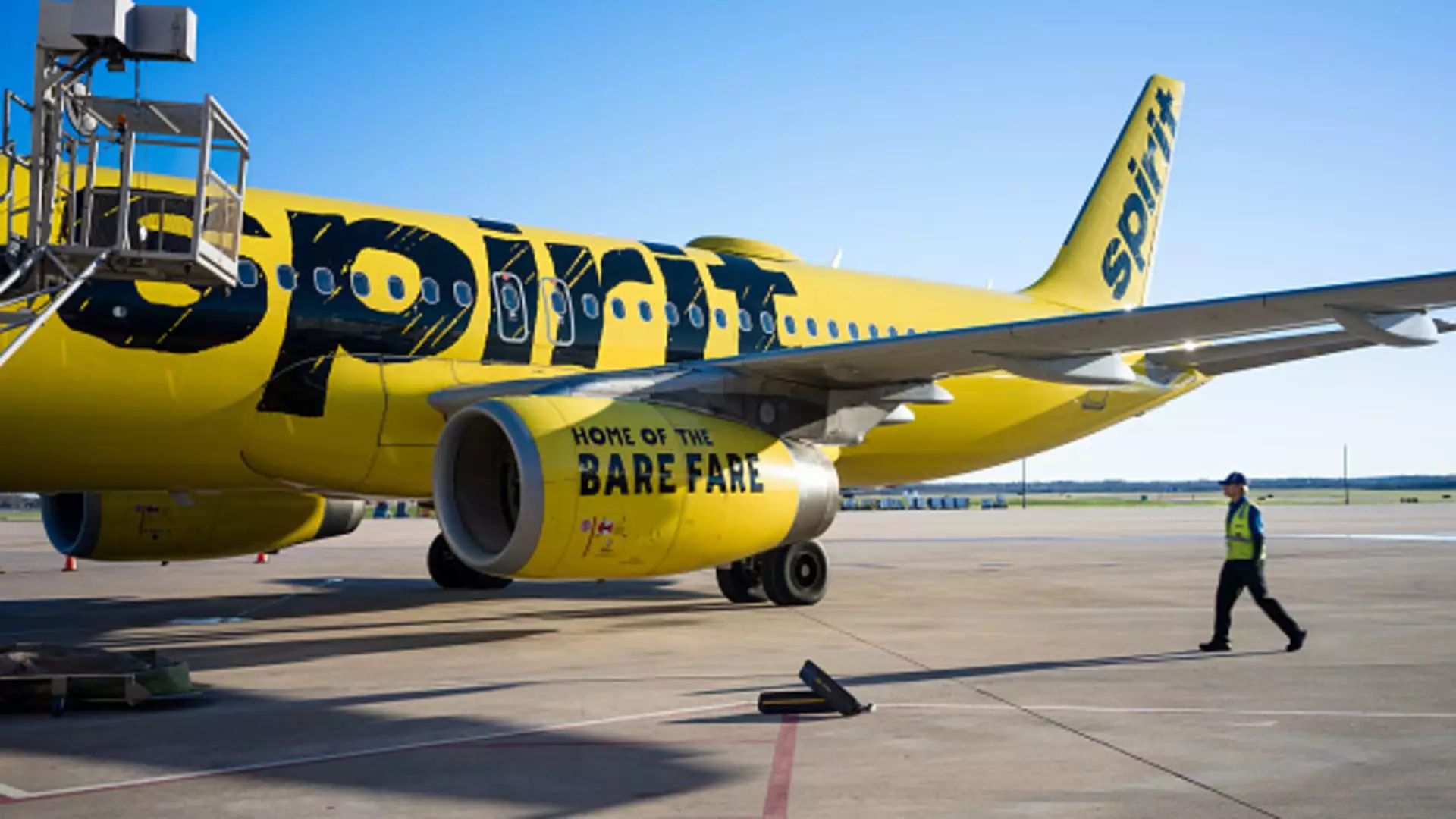Spirit Airlines has recently found itself in a precarious financial position, navigating through a web of debt and operational challenges. On a pivotal Friday, they announced securing a critical extension from their credit card processor regarding their debt refinancing timeline, now set to December. This extension comes just hours before the previous deadline loomed, showcasing the airline’s urgency in managing its financial obligations. The company’s recent filings reveal that it utilized its entire $300 million revolving credit facility, demonstrating a reliance on borrowed capital in a time of need. Despite this, Spirit anticipates concluding the year with liquidity slightly exceeding $1 billion, a figure that is certainly essential as they grapple with ongoing fiscal pressures.
Investor reaction to Spirit’s financial disclosures has not been positive, as the airline’s stock recently dipped to alarming low levels, dropping approximately 3% to below $1.50 per share. This decline indicates waning confidence from the market, as the stock has plummeted over 90% throughout the year, reflecting a broader investor concern surrounding the airline industry post-pandemic. Additionally, this downward spiral appears to be accelerating, with nearly 40% of this decline occurring in just October alone. Such figures serve as critical indicators of the challenges the airline faces in maintaining investor trust amid relentless operational and financial strain.
In light of their financial struggles, Spirit has undertaken several drastic measures including workforce furloughs, severe reductions in flight schedules, and postponing aircraft deliveries. These actions reflect a desperate attempt to curb operational costs amidst a tempestuous financial climate. Furthermore, the grounding of numerous planes due to a significant Pratt & Whitney engine recall exacerbates the airline’s operational hurdles, leading to diminished service capacity and customer dissatisfaction. The cumulative effect of these factors complicates Spirit’s rebuilding efforts and its ability to attract and retain passengers crucial for revenue recovery.
Adding to the complexity is the airline’s thwarted acquisition bid by JetBlue Airways, which was blocked by a federal judge citing antitrust issues. This setback significantly hampers Spirit’s strategic growth plans and highlights the precarious state of the airline market, where mergers are subject to rigorous scrutiny. As the company continues to negotiate with holders of senior secured notes and convertible notes regarding their maturities, there’s speculation, as reported by The Wall Street Journal, about a potential bankruptcy filing—a possibility that would send shockwaves through the industry.
Spirit Airlines stands at a critical juncture, confronted by a myriad of financial, operational, and market challenges. While the recent refinancing extension provides a temporary reprieve, long-term strategies will be essential in reversing its fortunes. The airline must not only stabilize its finances but also navigate the turbulent waters of the airline industry to achieve sustainability in an ever-evolving market landscape. The coming months will be telling, as the eyes of investors and analysts remain fixed on how Spirit Airlines manages to untangle itself from this complex web of fiscal difficulties.

